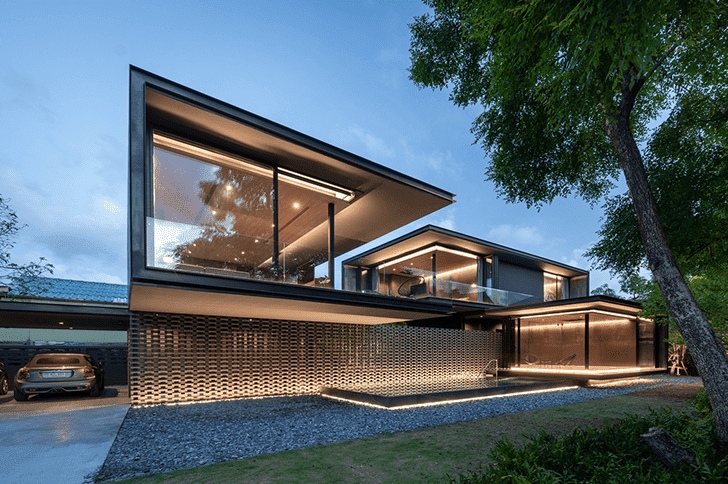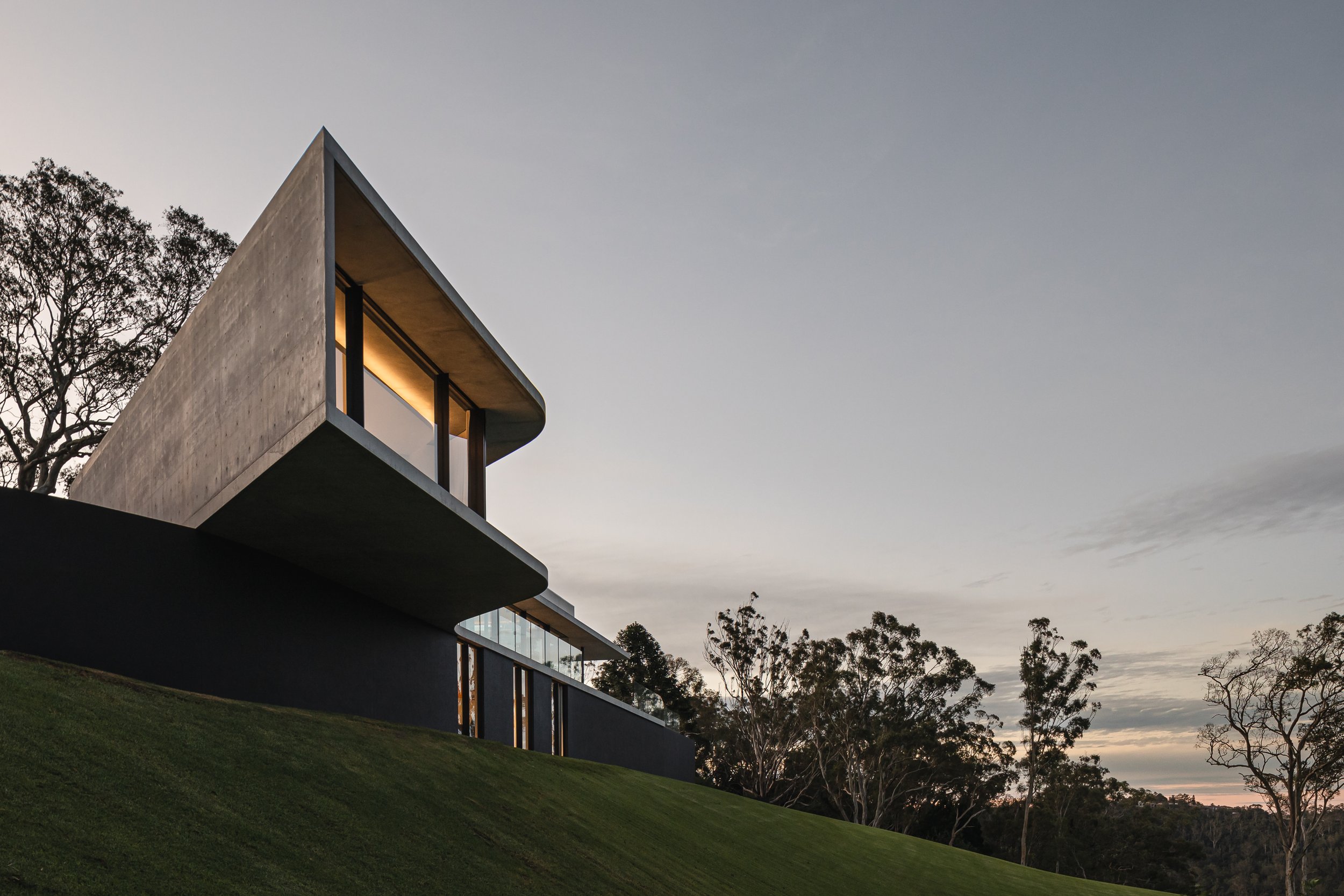Residential House Architect: Crafting Your Dream Home with Expert Design Solutions
Residential House Architect: Crafting Your Dream Home with Expert Design Solutions
Blog Article
Top Fads in Residential Architecture You Need To Learn About
As domestic architecture remains to evolve, a number of engaging trends are forming the method we create and populate our living rooms. Trick advancements such as lasting structure methods, the integration of smart home technology, and the increase of modular homes underscore a substantial change in the direction of both performance and ecological responsibility. Additionally, concepts like open strategy living and biophilic style are redefining our communication with room and nature. Recognizing these fads not just informs style options however also reveals broader effects for lifestyle and area - residential house architect. What might these developments suggest for the future of property living?
Sustainable Building Practices
A raising number of household tasks are accepting lasting building practices, driven by an expanding understanding of ecological influence and power effectiveness. This shift is characterized by the assimilation of environmentally friendly materials, energy-efficient styles, and innovative building and construction methods. House owners and contractors are increasingly prioritizing using renewable energies, such as bamboo and recycled steels, which not only minimize the carbon impact yet likewise boost the toughness and aesthetic allure of residential or commercial properties.
Incorporating energy-efficient systems is another essential aspect of lasting structure - residential house architect. Attributes such as high-performance insulation, energy-efficient home windows, and photovoltaic panels are coming to be standard in new residential designs. These components not just add to lower energy usage however likewise offer considerable lasting cost savings for homeowners
Furthermore, the design of lasting homes commonly emphasizes natural light and ventilation, minimizing the reliance on synthetic illumination and environment control systems. Landscape design practices, such as xeriscaping, further advertise sustainability by reducing water use.
As the demand for sustainable living options remains to increase, the household architecture industry is poised to introduce and adjust, ensuring that future homes are not only ecologically accountable yet additionally comfy and practical for their residents. - residential house architect
Smart Home Modern Technology
Smart home modern technology is revolutionizing the means home owners connect with their home, boosting comfort, safety, and power management. This cutting-edge method incorporates various devices and systems, allowing customers to regulate their homes from another location or through automated processes. Central to this fad is making use of wise devices such as thermostats, lighting, protection cameras, and devices, all connected using the Net of Points (IoT)
One of the most attractive functions of clever home modern technology is the capacity to personalize settings for optimal power efficiency. Property owners can monitor power use and readjust lights, air conditioning, and home heating based on their regimens, substantially decreasing energy costs. Furthermore, advanced protection systems furnished with clever locks and monitoring video cameras supply tranquility of mind, allowing remote tracking and alerts to prospective safety and security breaches.
Combination with voice-activated aides boosts user experience, permitting house owners to control gadgets with basic voice commands. As innovation remains to develop, the capacity for smart home systems to improve lifestyle expands, making them an essential factor to consider in modern-day residential style. Eventually, smart home technology is not just a trend but a basic shift toward more smart living environments.
Open Concept Living
Open up concept living has become a specifying attribute in contemporary property style, defined by the elimination of traditional obstacles in between spaces. This style ideology promotes fluidity and connection within the home, permitting a smooth shift in between areas such as the kitchen, dining, and living areas. By removing dividings and wall surfaces, open idea layouts develop a sense of residential house architect space, promoting an inviting environment that enhances social interaction.

Furthermore, this strategy to household design lines up with minimalism, concentrating on practical simplicity and visual comprehensibility. Property owners appreciate the adaptability of these designs, which can be conveniently adapted to show personal style via furnishings arrangement and style. As open idea living proceeds to acquire grip, it continues to be a testament to developing household characteristics and the desire for homes that improve link and comfort.
Biophilic Design
Biophilic style has come to be progressively substantial in property design, emphasizing the inherent connection in between humans and nature. This layout viewpoint seeks to incorporate natural environments right into living spaces, thereby promoting a sense of health and enhancing the lifestyle for residents. By integrating functions such as natural light, greenery, and natural materials, biophilic style advertises a harmonious partnership in between indoor atmospheres and the environment.
Key aspects of biophilic style consist of big windows that offer unobstructed views of outdoor landscapes, living wall surfaces that introduce greenery into insides, and open layout that encourage air movement and all-natural light infiltration. Water functions, both within and outside the home, serve to develop relaxing environments and boost sensory experiences.
Moreover, using lasting materials not only sustains environmental stewardship yet likewise adds to much healthier interior air top quality. As recognition of ecological concerns rises, home owners are progressively focusing on layouts that reflect their link to nature. Fundamentally, biophilic style not just boosts visual appeal yet also addresses mental and psychological demands, making it an essential pattern in modern household design.
Modular and Prefab Houses

Additionally, modular Home Page and prefab homes are developed with sustainability in mind. Many suppliers utilize energy-efficient systems and green materials, such as photovoltaic panels and progressed insulation strategies, adding to minimized energy intake and reduced energy costs for home owners. The versatility of design options allows for customization, satisfying diverse aesthetic preferences and practical demands.
As the need for affordable housing proceeds to rise, modular and prefab homes present a feasible remedy, addressing both economic and environmental obstacles. Areas are significantly recognizing the capacity of these frameworks, incorporating them right into metropolitan and rural settings. Generally, the trend towards modular and prefab homes signifies a change toward much more lasting, efficient, and versatile living settings, from this source making them a crucial facet of modern residential design.
Verdict
In verdict, the advancing landscape of household architecture showcases considerable trends that prioritize innovation, sustainability, and well-being. Lasting building techniques and wise home technologies enhance effectiveness and comfort, while open concept living and biophilic design foster social interaction and a connection to nature. The increase of prefab and modular homes provides personalized and economical services, showing a more comprehensive shift in the direction of useful and responsible living. These trends jointly highlight a commitment to creating unified and innovative residential atmospheres.
Key growths such as sustainable structure methods, the integration of wise home innovation, and the increase of modular homes highlight a considerable shift towards both performance and ecological obligation.The rise of prefab and modular homes has actually transformed the residential style landscape, supplying innovative services for effective and lasting living.Additionally, modular and prefab homes are designed with sustainability in mind. Overall, the pattern toward modular and prefab homes signifies a shift toward much more lasting, efficient, and adaptable living settings, making them a crucial facet of contemporary household architecture.
Sustainable structure techniques and clever home technologies improve efficiency and ease, while open principle living and biophilic style foster social communication and a link to nature.
Report this page